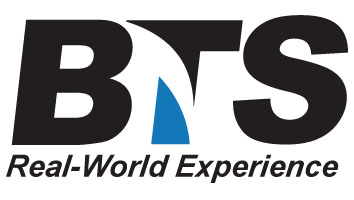Module 1 : CO Power Concepts
Safety - What Could Go Wrong?
What Exactly Is Ground?
Ground as A Conductor
Voltage Potential: AC & DC Voltage
Ohm's Law
Series & Parallel Circuits
Reactance: Capacitance, Inductance
Impedance
- Resistance vs. Impedance
- Power: Watts vs. Volt-Amps
- Power Factor
- Surge Current
Decibel Measurements
- dBrn & electrical Noise
Module 2 : AC Power & Grounding
Commercial AC (supporting DC systems)
Conventions:
- Single-Phase & Three-Phase
- Wye & Delta Inputs
- Multi-Grounded Neutral (MGN)
Power Conversion
- Rectification
- Peak-to-Peak, Average, RMS
Ground Potential Rise (GPR)
Disconnects:
- purpose, manual versus automatic
- ACB, switch-gears
Surge Arrestors
- types, monitoring
Generator Transfer Switch & Generator:
- selecting, common settings
Rectifier Comparison:
- current vs. future estimates
- early (non-switching) conversion
- switching (early, modern, full-featured with monitoring)
- settings: float, equalize, LVD, walk-in, surge current, other settings
Inverters:
- functions, individual vs. net system efficiency
- configurations for redundancy
- integrated features & solutions
Examples
Exercise
Module 3 : DC Power Components
CO DC Components
- Rectifier, Charge Bus, Discharge Bus, Battery String, Power Board, Inverter
- Points of Failure
Rectifier Operation
- Non-Switching vs. Switching Comparison
- Review of Rectifier Types
Negative Voltage Systems
- Wiring Conventions
Battery Types
- Wet Cell: LA, LC, VLRA, NaNiCl
- AGM
- Mounts
DC Power Boards
- Main Disconnect, LVD, Shunt, meters
- A&B distribution
DC Power Distribution
- primary & secondary distribution buses
- BDFB
- bar types - Cu vs. Al, coated vs. non-coated
Fuse & Breaker Types
Wire Derating Charts
Testing
- Reconciling Currents - potential & return leads
- Voltage Drops: battery-to-power board, to equipment
- How to take a measurement
Examples
Exercise
(Optional: DC-AC Inverters for Video Head-End or Data Center Servers)
(Inverter examples, redundancy configurations incl. cost vs. benefit, surge & efficiency specs)
Module 4 : Bonding & Grounding
RUS, AT&T, other standards
Ground Bar Types: MGB, OPGP
Wiring
- RUS: "PANI", CEGB, FGB, GWB, IGZ, etc.
- AT&T: OPGP, CVGB, COGB, MGB, IBN, etc.
Isolated Grounds
- Ground Window Theory: when and when not required
- Noise fault locating, mitigation
Grounding Rods
- size, depth, angle
- chemical grounding (GEM, ground wells)
Bonding Methods
- Exothermic Welds
- Compression/Crimp Connection
- other connection types
Grounding Standards:
- Remote Site Example, MGE ground options
- Ground cable types: cable-entrance, AC pedestal/MGN, DC equipment, etc.
- Grounding at the Prem: ground bar depth, ground cable sizing
Measurements
- OSP cable shield
- Ground Field Resistance: multiple-electrode fall-of-potential & clamp-on meters
Exercise
(Optional: Customer Premise Grounding Examples: aerial or buried ground, detached-home
BET, trailer park, telco & power company grounds, citations from agencies like
the NEC/NESC/CFR, etc.)
(Optional: MTSO antenna tower grounding, fence and hut grounding)
Module 5 : Specifications & Standards
Organizations:
- NFPA NEC, IEEE NESC, Federal CFR/eCFR, Telcordia, telco-specific
Telcordia GR-1502:
- fastener types
- supports
- ASTM specifications
- Seismic zones II & IV
Telcordia GR-1275:
- Installer Skill Levels 1 thru 4
- CLEC access - physical, power, grounding, signal interconnections
- Safety, Hazmat, Warnings
- Planning & Communication
Telcordia GR-63:
- NEBS standards
- Examples
Telco-Specific:
- Verizon IP72202
- AT&T TP-76xx
- CenturyLink/Lumen 77351
- others (as provided)
Module 6 : Hardware Examples
General: Types, safe loads, selection of hardware
Assembly: J-hooks, brackets, bolt/washer/nut assembly, grades, isolation
Frames: Securing a bay, securing line-ups, maintaining the IGZ, bonding
Cabling: Support types: grid, ladder rack, troughs, waterfalls, etc.
Distance: Work space, power space, signal space, ventilation, plenums, etc.
Labeling: Required fields (Telcordia), examples of incorrect labeling, longevity, etc.
Inspections: Testing, verification (operational, safety), changes, optimization, fire
Examples
Module 7 : CO Power-Related Routines
Battery String Maintenance
- Specific Gravity, electrolyte level, voltage measurements
- Frequency, common problems & solutions
- Strap Continuity Test example
Rectifier & Powerboard
- Voltage & Current Readings
- Automatic power monitoring (Alpha Cordex example)
- Floating vs. Equalizing
- Common problems & solutions
Breakers & Fuses
- Primary vs. GMT 'tell-tale'
- Oxidized or current-inhibiting contacts
- Possible problems
Smoke & Fire Prevention
- Symptoms - What to do
- Firestopping
- Causes of previous fires
Equipment List
- Calibration vs. equipment that cannot be calibrated
- Digital Multimeters: minimum capabilities, tolerances, data-logging
- Ground Field Resistance Testers
- Specific-Gravity/Hydrometer/Battery Density testers
- Battery Internal Resistance Tester
- Infrared Camera
Battery & Power System Monitoring
- per-cell & system measurements
- on-demand & trend measurements (Generex BACS & Emsys examples)
- alarm history
(Optional: Power Monitoring System In-Depth Example: Enersys, Generex, Benning, etc.)
Module 8 : Power & Grounding Terms
Glossary & Dictionary of Terms
Regulatory & Standards Agencies (US)
Regulatory & Standards Agencies (Canada)
Metric Prefixes
